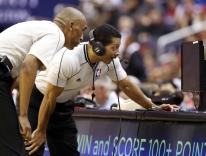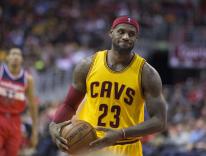Football fans of a certain age may remember Charles White, who died in January at the age of sixty-four from esophageal cancer. White was a Heisman Trophy winner with the University of Southern California and played eight seasons in the NFL. He was in his early fifties when he was diagnosed with dementia, a symptom of chronic traumatic encephalopathy (CTE)—the degenerative brain disease brought on by repeated traumas to the head—which is diagnosable only after death. White’s former wife, who was his caregiver, has donated his brain to determine whether he suffered from CTE, which she thinks led to his abusive self-medication after football. “Everyone was targeting him” on the field, she said. “And he gave hits that were as hard as the hits he was getting.”
Hard hits are part of the game: bursts of violence celebrated, replayed, and expectantly awaited anew by an audience primed for more. As an inevitable byproduct, so are injuries. The NFL leads major American sports in injuries by a long shot—nearly six per game, according to a Harvard analysis, compared with less than one in the others. These moments aren’t celebrated, but they’re still often replayed: YouTube is filled with compilations of football’s “most gruesome” injuries, some going back decades. One of these occurred on Super Bowl Sunday in 1989 when Cincinnati Bengals lineman Tim Krumrie severely broke his leg in front of a global television audience. One of the most terrifying occurred last month, when Buffalo Bills player Damar Hamlin went into cardiac arrest after tackling an opponent. Reports later detailed the scope of critical-care protocols the NFL has in place in every stadium at every game. These measures thankfully helped save Hamlin’s life, but their very existence is an acknowledgement of the potentially fatal risks of America’s most popular sport. As the game is played with more speed than ever, and as the competitive spotlight encourages players to take greater chances with their bodies, an on-field tragedy seems only a matter of time.
Most injuries aren’t as serious as Hamlin’s. The ruptured tendons and torn ligaments, the euphemistic dings and dents—these receive little attention outside locker rooms and fan blogs. Yet the unavoidable hazards of the job exact a disproportionate toll on the vast majority of those not named Tom Brady. As with injuries, football is an outlier with its player contracts, which in other sports tend to be fully guaranteed. A recent article in the Guardian notes that the typical NFL contract is filled with so many team-friendly terms and conditions that players rarely receive the full announced value. Most contracts also contain standard clauses that reduce payments for time missed due to injuries in games or practice. Hamlin himself, placed on the injured list after nearly dying, was set to be docked a portion of his salary until the league and players’ union worked out a deal to pay him in full.
The NFL has generated $18 billion in revenue this year and is well on track to meet its goal of $25 billion in 2025. Many of the players you see on the field today could be gone by then. The average NFL career is short, usually lasting about three years. That may not be enough time to qualify for the full slate of pension and health-care benefits helpful in treating injury-related issues, including CTE, down the road. But the NFL says it’s committed to ensuring the safety of those who make their product so valuable. This year, for the first time ever, the meaningless Pro Bowl exhibition game won’t have tackling. According to the NFL website, it will be played in “an exciting new format”: flag football.
Please email comments to [email protected] and join the conversation on our Facebook page.
Previous Story
The Limits of ‘Longtermism’
Next Story
The Church’s Memory Problems


